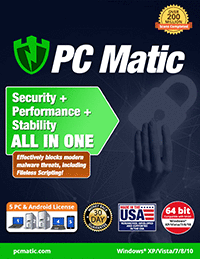Why and when we should use the PDF file format
"PDF" stands for "Portable Document Format". It is an open standard developed by Adobe, and is designed for print. We prefer PDF format to other formats, such as Word or Excel, when the document is intended to be distributed, used for storage and/or archiving, or when creating "electronic paper forms" for a few reasons.
Some of the Advantages of Using PDF Files
For an electronic document to be admissible in a court of law, it must be created in a file format that cannot be altered without leaving an electronic footprint.
A PDF file is a "read only" document that cannot be altered without leaving an electronic footprint, and meets all legal requirements in a court of law. Furthermore, the PDF format is practical and economical by allowing the documents to be stored on the owner's server. This eliminates the need for additional hardware (except for additional hard drive space) and allows for exceptional integration into any network.
PDF Files Provide Document-Level Security
Document security is paramount to sharing information over a network, over an intranet or over the Internet. With the PDF format, organizations are able to put User-Password security at the document level. This allows emailing of documents between people or locations without the fear of an unauthorized person viewing the document.
This makes it possible to discourage users from editing the content of a document in a PDF in ways that are not possible in Word documents.
This also allows for greater functionality with security in electronically fillable and submittable forms in ways that are not possible in other document formats.
PDF files are Compatible Across Multiple Platforms
A PDF format represents a document independently of the hardware, operating system and application software used to create the original PDF file. It was designed to create transferable documents that can be shared across multiple computer platforms. Cross platform acceptability is another reason PDF is the document format of choice to use over a network, the Internet or intranet. Allows for single file distribution
Unlike a Word document, a PDF will look the same everywhere. Unlike a Web page, a PDF can be attached to an email and distributed independently. Compression of a PDF file is substantial.
A typed 8½x11 letter is approximately 1,000 kilobytes in size when scanned into a system, but compresses to 28-33 kilobytes when converted into a PDF document. An electronic document converted into the PDF format compresses to approximately 25% of its original size. For example, a 20 kilobyte word processing document is compressed to under 5 kilobytes. This size reduction allows the PDF document to open quickly at the workstation and makes it ideal for use on a network/Internet/intranet.
The Software to View PDF Files is Freeware
An enormous advantage of PDF files is that they can be retrieved, viewed and printed with widely-distributed freeware called Adobe Acrobat Reader. Adobe Acrobat Reader can be installed, and more than likely already has been, on every network computer for free. People outside your organization can download it for free from the Internet. This is a major benefit because it allows you to share documents easily with anyone inside and outside your organization with no additional expenses and across all computing platforms. Now most common and modern browsers will open, download, and print a PDF file directly without the need of a plugin or additional software. Allowing easy and free access to most everyone.
Noteworthy:
Adobe Reader is the only PDF reading application accessible to screen readers. PDFs must be opened in the Adobe Reader desktop application, not the browser plugin, for a screen reader to work.
PDF Files will Pass the Test of Time
The PDF format was originally developed by Adobe for the U.S. Federal Government to store its legacy files. Today, the U.S. Federal Government is still the largest user of PDF technology.
In 2000, the U.S. Federal Courts adopted the PDF file as their electronic document format. The widespread governmental use of the PDF format for archiving and sharing documentation virtually guarantees that the PDF file will remain as a long-term format standard.
Email Etiquette
Time and US time zones (12 Hour Version)
Time and US time zones (24 Hour Version)
FOB Definition/Shipping Terms of Sale
Electronic Records Management Standards
General Password Guidelines/Best Practices


